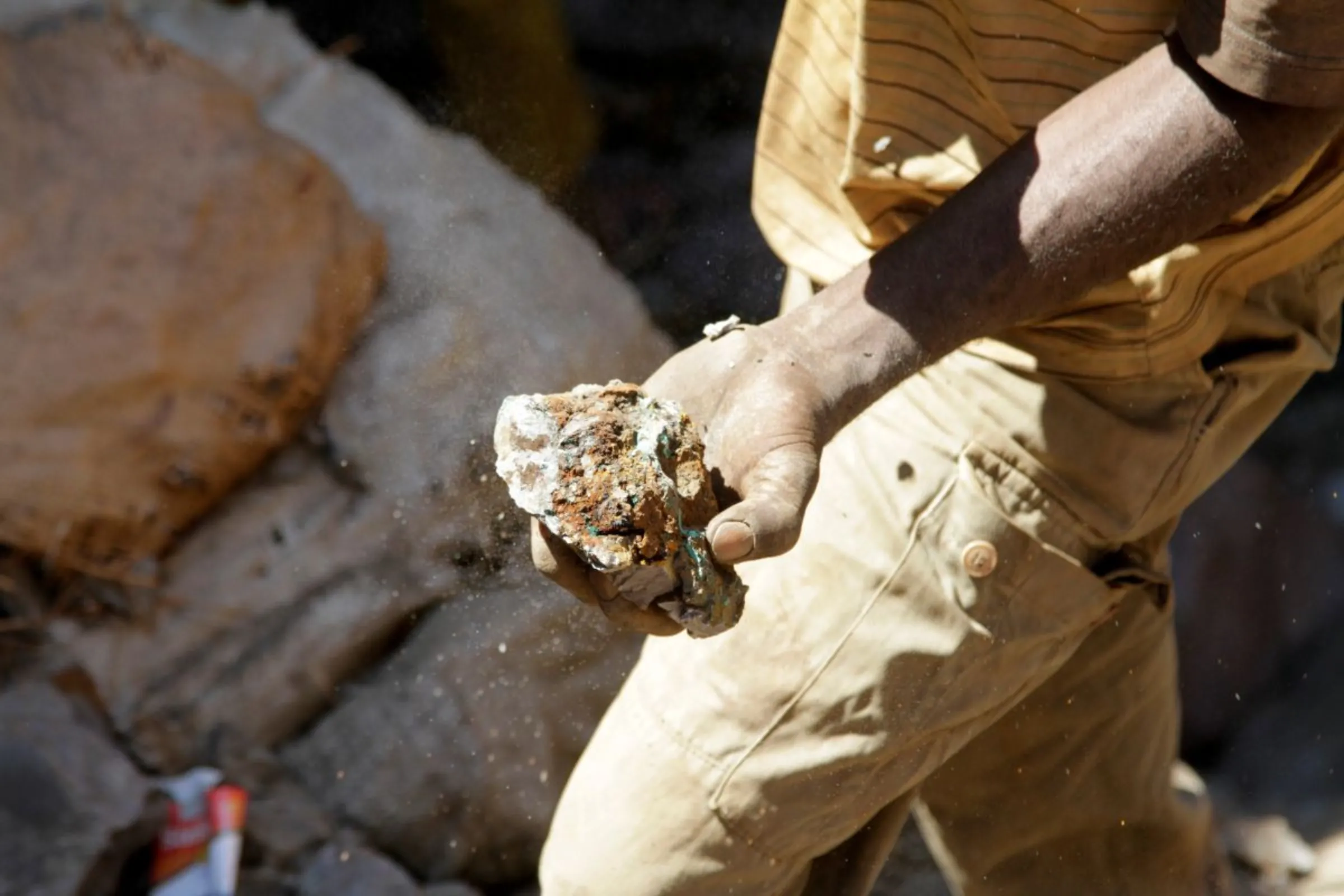Context is powered by the Thomson Reuters Foundation Newsroom.
Our Standards: Thomson Reuters Trust Principles

An artisanal miner carries raw ore at Tilwizembe, a former industrial copper-cobalt mine, outside of Kolwezi, the capital city of Lualaba Province in the south of the Democratic Republic of the Congo, June 11, 2016. REUTERS/Kenny Katombe
New report shows resource-rich nations earn little as minerals flow from Global South mines to factories in China and markets in the West.
NEW DELHI - Countries in the Global South hold most of the world's reserves of critical minerals needed for the clean energy transition, but see few of the profits, according to a new report.
Critical minerals have moved from industrial policy to the heart of climate diplomacy and will be a live issue at COP30 in Belém, Brazil in November as governments seek secure, sustainable supplies for batteries, solar panels and other clean technologies.
Demand for minerals crucial for renewable energy, like lithium and cobalt, is set to nearly triple by 2030, according to the International Energy Agency.
As Europe and North America race to loosen China's hold on supply chains, producer nations in the Global South face growing social and environmental costs, but poor economic returns from the green rush, Oxfam said in a report published on Wednesday.
Here is a look at where these minerals are located, how value is built, and who profits from them.
About 70% of the world's reserves of cobalt, lithium and nickel lie in the Global South, said the Oxfam report.
The Democratic Republic of Congo (DRC), the largest country in sub-Saharan Africa, produces nearly three-quarters of the world's cobalt. Argentina, Bolivia and Chile together hold almost half of the world's lithium reserves. While Indonesia and the Philippines dominate nickel mining.
But most processing and investment flows north. Oxfam said Latin America captures only about 10% of the lithium battery value chain, despite its reserves.
China refines the majority of global cobalt and lithium, while Europe, Japan and the United States dominate the highest-value segments, such as battery production and electric vehicle assembly.
The imbalance is reflected in financing. Africa accounted for less than 3% of global clean energy investment in 2024, despite its mineral wealth and vast solar potential, according to the International Energy Agency.
Cobalt highlights the divide. Oxfam calculated the DRC retained just 14% of cobalt supply chain revenues, while foreign investors and downstream companies captured 86% of the share.
Tesla earns about $3,150 in profit per car, each containing roughly 3kg of cobalt. The Congolese government receives less than $10 in royalties for that cobalt, while a miner may see about $7, Oxfam said.
In 2024, Tesla reported $5.63 billion in net income from nearly 1.8 million cars. If all cobalt came from the DRC, royalties to the government would have been $17.5 million, less than 1% of Tesla's profit, Oxfam report said.
The same pattern applies to lithium and nickel. Resource-rich countries export ore, but see little of the returns once minerals are refined, turned into components and built into finished products.
The cost of finance is one barrier. Oxfam says clean energy projects in emerging economies face borrowing rates of between 9% and 13.5%, compared with between 3% and 6% in advanced economies.
That makes electricity infrastructure far more expensive to build in Africa or South Asia than in Europe or the United States.
Multinational companies headquartered in richer economies continue to dominate most mining output, limiting producer nations' leverage.
Some governments are pushing back. Indonesia has used export bans to spur domestic nickel refining, while the DRC has debated similar measures for cobalt.
But Oxfam argued that without cheaper finance and more policy flexibility, resource-rich nations remain stuck at the bottom of the chain.
Critical minerals will remain central to climate diplomacy as governments head to COP30 in Belém. The challenge, analysts say, is ensuring that the race to secure supply chains does not repeat the social and economic divides of past resource booms.
This article was corrected on Thursday September 25, 2025 to reflect that COP30 would be held in Belem in November, and not next month as previously stated.
(Reporting by Bhasker Tripathi; Editing by Jon Hemming.)
Context is powered by the Thomson Reuters Foundation Newsroom.
Our Standards: Thomson Reuters Trust Principles